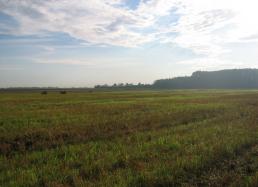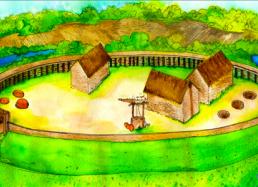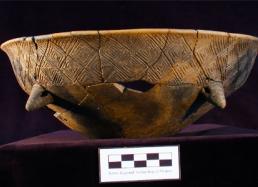The Great Hungarian Plain
The concept of agriculture—raising domesticated plants and animals—spread from the Near East, through Greece, and into southeastern Europe by around 6000 B.C. (the Early Neolithic Period). At that time, people began to abandon their hunter-gatherer lifestyles and settle down on the Great Hungarian Plain.
Much like the American Midwest, the Great Hungarian Plain consisted of fertile flatlands crisscrossed by meandering rivers that nourished the soil and provided the perfect place for cultivating crops and herding livestock.
Tell Construction
For a thousand years, people lived in loose-knit farming communities scattered across this plain. But by 5000 B.C., these farming families began clustering together to construct fortified settlements—longhouses occupied by clan groups, surrounded by a protective perimeter wall and ditch. Made of wattle and daub (woven sticks and mud), these structures were regularly burned down and rebuilt on the same spot, possibly as a way to control rodents and other pest infestations. Over time, the layers of destruction and construction resulted in tells (raised fortified settlements).
Tell Life
Atop these tells, people made pottery, wove cloth, crafted stone tools, fashioned simple copper jewelry, practiced rituals, stored and ground grains, and buried their dead. Grave goods such as shells and obsidian indicate that tell inhabitants traded with distant neighbors. And, in the rich fields below, the community worked together to raise crops such as wheat, barley, lentils, chickpeas, and bitter vetch, and herd livestock like pigs, sheep, goats, and cattle. These cultural traditions, lifeways, and artifacts help define a group of people that archaeologists call the Tisza, who lived on the Great Hungarian Plain from about 5000 to 4500 BC.
Tisza life on the Great Hungarian Plan continued much the same way for hundreds of years, until many settlement sites were abandoned around 4500 B.C., the beginning of the Copper Age. Some tells were reoccupied again later, during the Bronze Age, and these grew in size and social complexity, eventually paving the way for full-fledged proto-cities ruled by hereditary chiefs around 2000 B.C.




